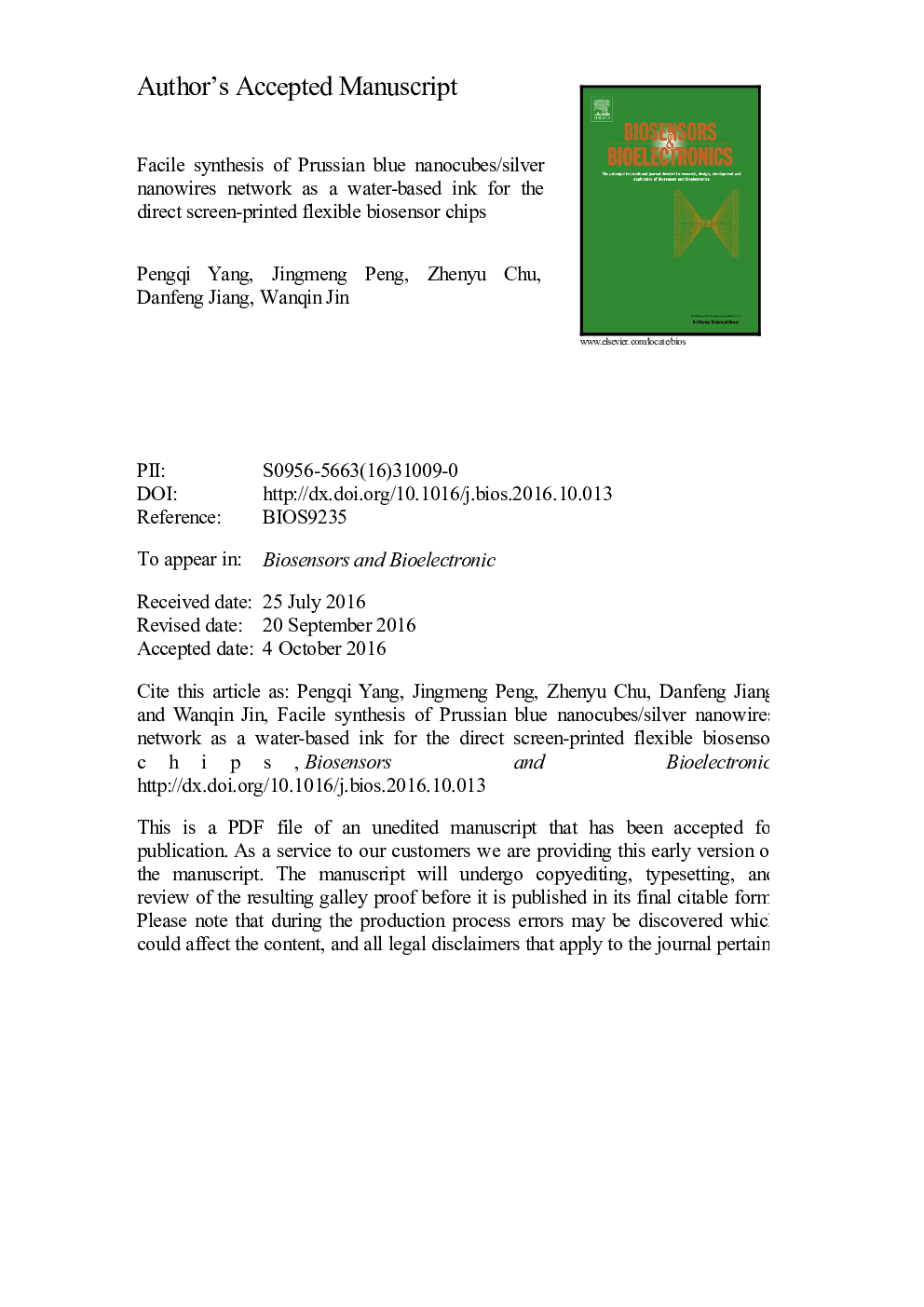| Article ID | Journal | Published Year | Pages | File Type |
|---|---|---|---|---|
| 5031658 | Biosensors and Bioelectronics | 2017 | 29 Pages |
Abstract
The large-scale fabrication of nanocomposite based biosensors is always a challenge in the technology commercialization from laboratory to industry. In order to address this issue, we have designed a facile chemical method of fabricated nanocomposite ink applied to the screen-printed biosensor chip. This ink can be derived in the water through the in-situ growth of Prussian blue nanocubes (PBNCs) on the silver nanowires (AgNWs) to construct a composite nanostructure by a facile chemical method. Then a miniature flexible biosensor chip was screen-printed by using the prepared nanocomposite ink. Due to the synergic effects of the large specific surface area, high conductivity and electrocatalytic activity from AgNWs and PBNCs, the as-prepared biosensor chip exhibited a fast response (<3 s)ï¼ a wider linear response from 0.01 to 1.3 mM with an ultralow LOD=5 µm, and the ultrahigh sensitivities of 131.31 and 481.20 µA mMâ1 cmâ2 for the detections of glucose and hydrogen peroxide (H2O2), respectively. Furthermore, the biosensor chip exhibited excellent stability, good reproducibility and high anti-interference ability towards physiological substances under a very low working potential of â0.05. Hence, the proposed biosensor chip also showed a promising potential for the application in practical analysis.
Keywords
Related Topics
Physical Sciences and Engineering
Chemistry
Analytical Chemistry
Authors
Pengqi Yang, Jingmeng Peng, Zhenyu Chu, Danfeng Jiang, Wanqin Jin,
